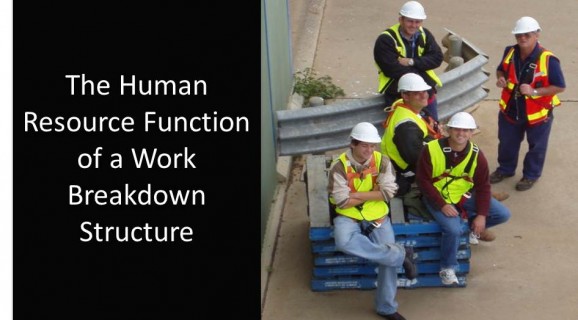
Why use a work breakdown structure?
The Work Breakdown Structure (WBS) serves a number of purposes. It helps in the efficient planning of the project by enabling the project manager to better organise time-limited activities, and allows the project and its stakeholders to fulfil the needs of the client. These needs will include quality and cost considerations, and by listing individual tasks required to complete the project the WBS will help to more completely define project scope (in addition to the project scope document).
Finally, the WBS will help to define responsibilities associated with each task, as well as the resources needed to successfully complete each task. Here we look at how this human resource function is accomplished by the WBS.
The project management questions answered by the WBS
A question of resource
By defining the independent and interlocking nature of each task required by the project, the WBS helps to clearly pinpoint all resources needed at each stage. These resources include ensuring the right people with the relevant qualifications and experience are employed to oversee and work on each task. When examining this, the project manager needs to take a human resources management approach to project management.
Having the wrong people in place will have an adverse effect on quality, cost, and time.
A question of organisation
When creating the WBS, use a team approach. Get all stakeholders together to discuss the project deliverables and help define the tasks required. This will ensure that language used is consistent throughout the project (for example, is it cable or conduit?), and that all required tasks are identified.
At this point an organisational hierarchy can be implemented, with the roles and responsibilities properly catered for by human resource deployment. In this way, the team will be properly informed as to individual duties and expectations, with the project manager performing the duty of human resource manager with the aid of the WBS and full team buy-in.
A question of deployment
The second level of the WBS is usually the project phase. This gives an indication of the exact resources needed in any given task, including the human resource requirements. By referral to the WBS, the project manager will pinpoint the need for these required resources, and that will help to control project timing, cost, and quality.
Delivery benefits from the WBS
The project manager will use the WBS to its full advantage, and when doing so will find it offers a range of benefits:
- It’s a powerful planning tool
- It helps identify and control required resources and costs
- It helps to identify and plan for potential problems
- It is an aid in defining project scope and controlling project progress
All the above are linked by effective deployment of the human resource. This is, perhaps, one of the major benefits of the WBS to the project manager.

